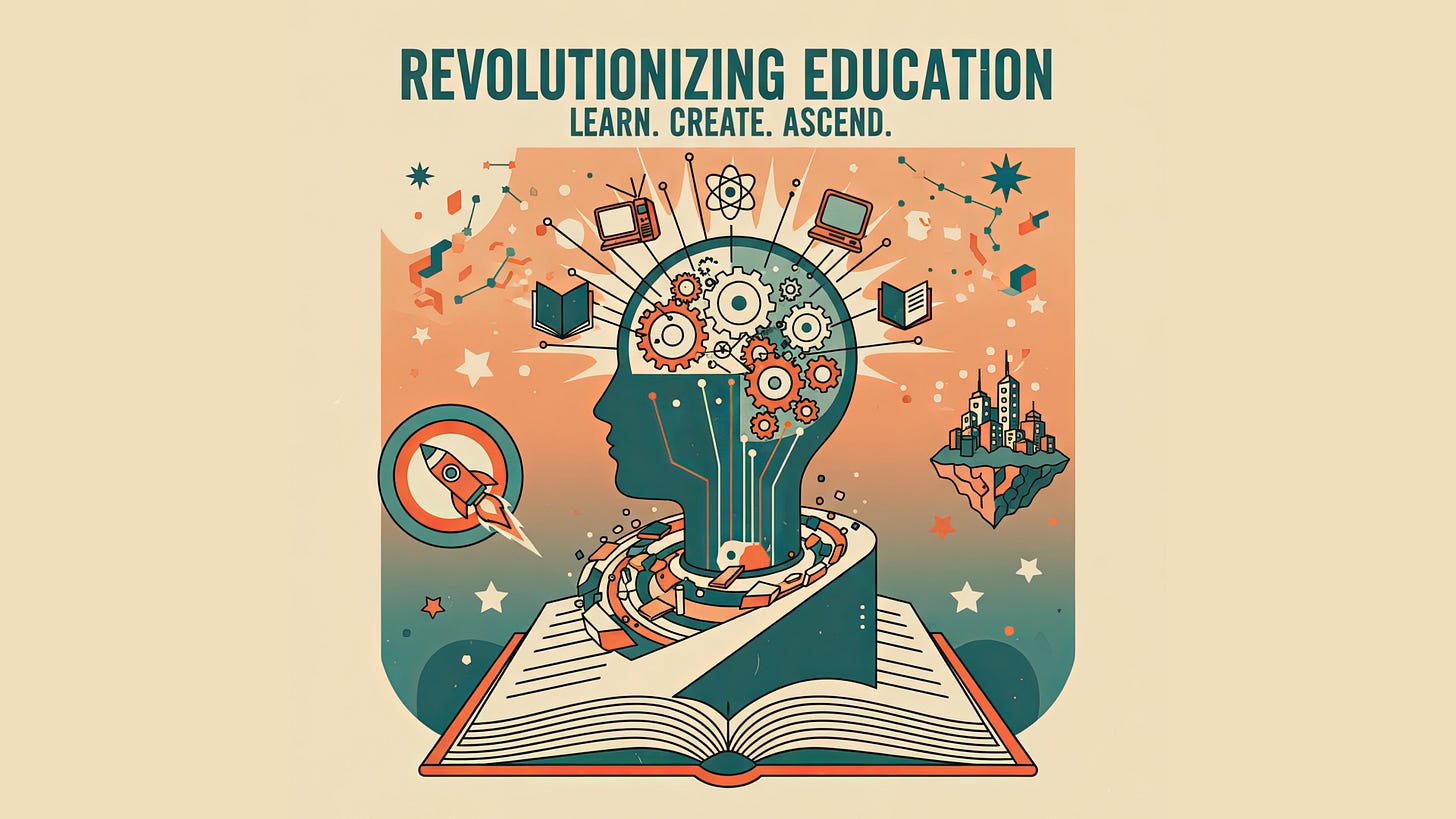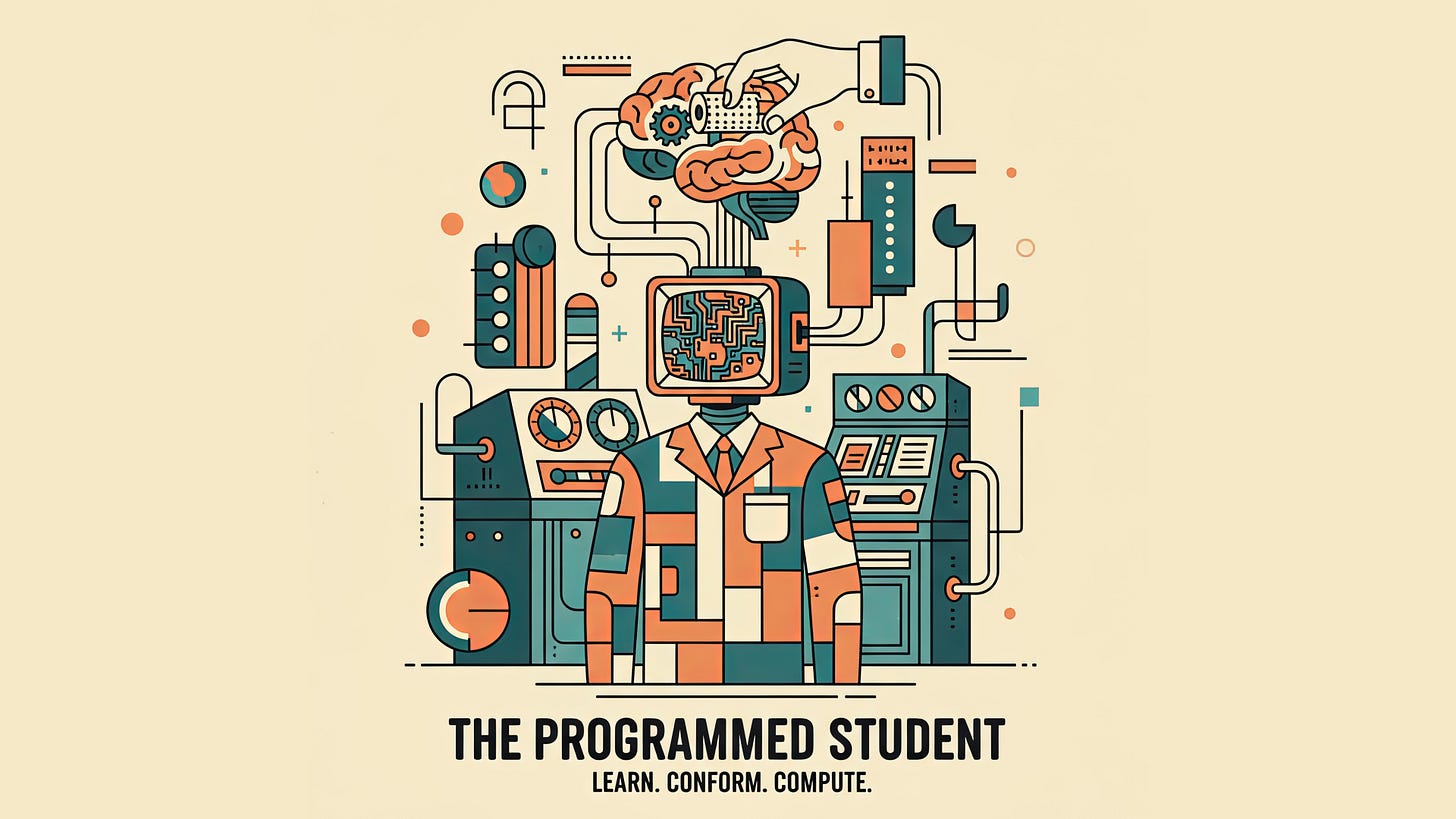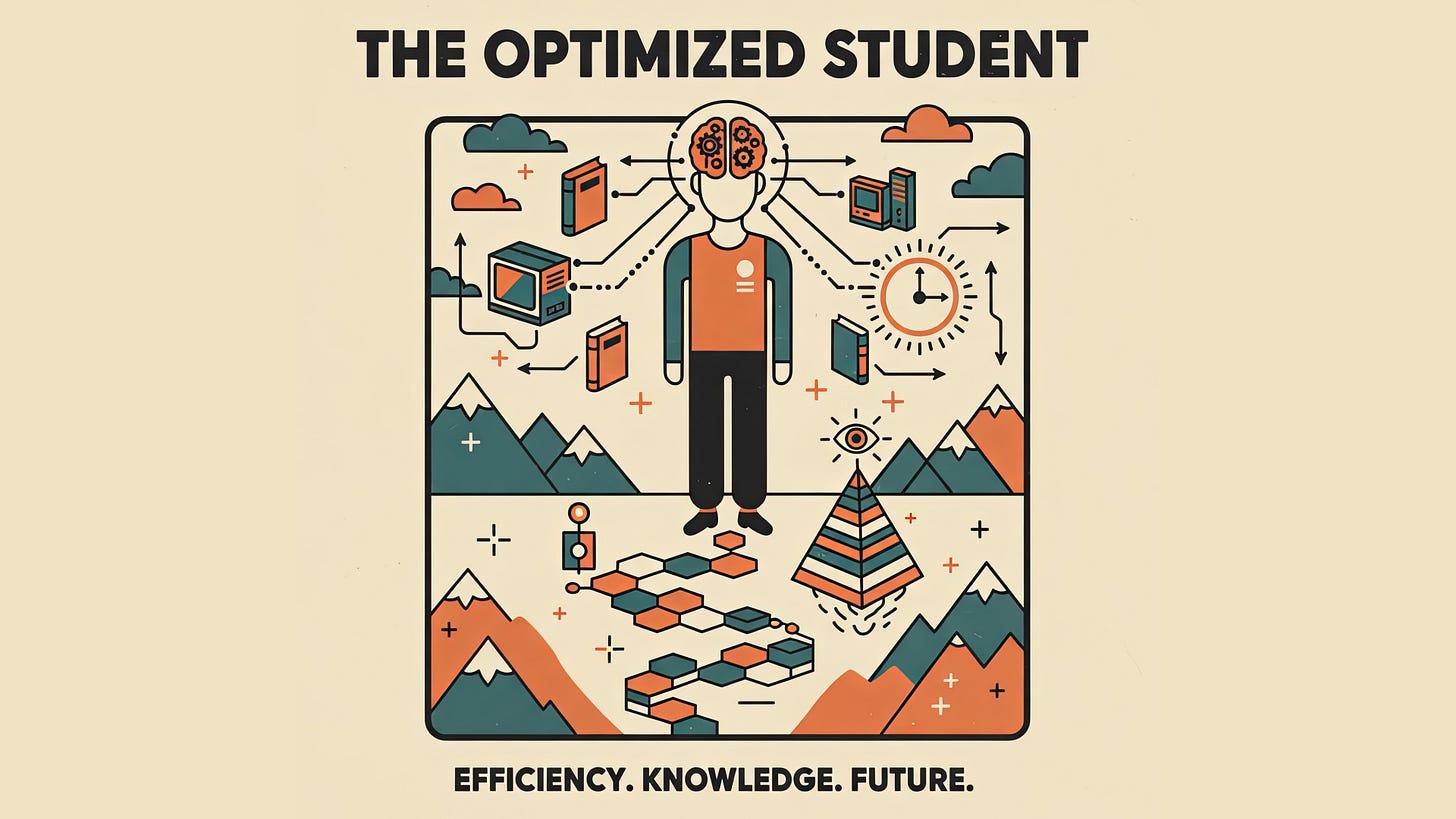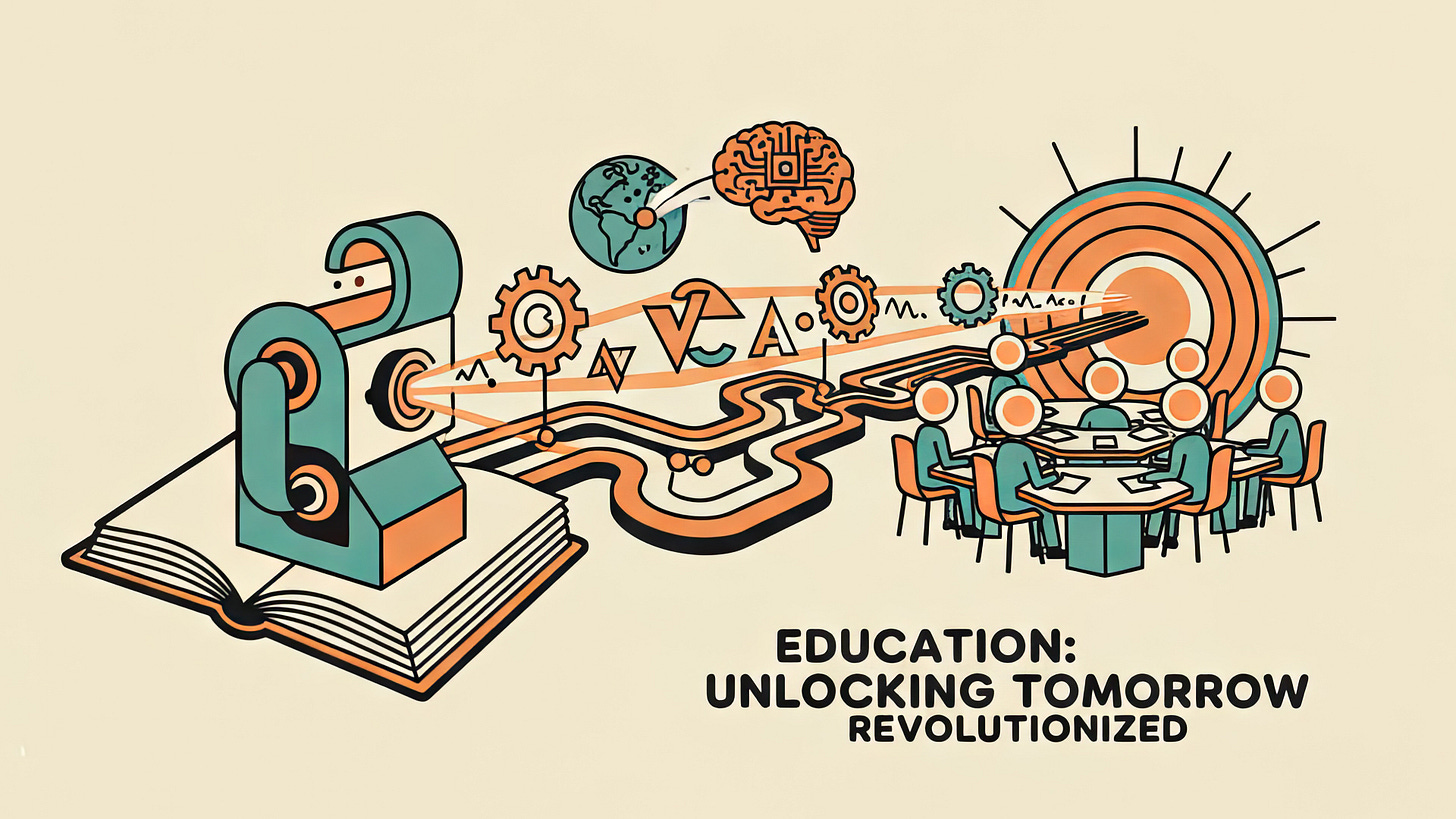Alpha Schools and the Pattern of Unfulfilled Educational Revolutions
Why History Suggests Caution About AI-Driven Schooling
A few weeks ago, a subscriber asked me: “What do you think about Alpha Schools?”
It’s a question I’ve been turning over ever since. Not because I find Alpha Schools particularly novel, but because the conversation surrounding them feels so familiar. My LinkedIn and Substack feeds are currently full of excitement about these AI-driven microschools and their promise to revolutionize education through “2 Hour Learning.” They make bold claims about unprecedented pedagogical efficiency and confident predictions that this time, finally, technology will fix what’s broken in traditional schools.
The problem is: I’ve heard this story before.
The most vivid memory comes from 2009, when Quest to Learn launched in New York City. I was deep in game-based learning research at the time, and the school felt like everything we’d been advocating for. It was immersive, inquiry-driven, and built around engagement rather than compliance. The excitement in our scholarly circles was noticeable. This was going to change everything. I followed every development closely, hoping we were watching the future of education unfold.
Today, Quest to Learn still operates. It’s influenced other schools. But the announced revolution never came.
That experience taught me to recognize a pattern, and I’m seeing it again with Alpha Schools. It’s not the technology itself that concerns me. AI is genuinely powerful and will certainly impact education. Rather, it’s the narrative structure. Once again, entrepreneurs and technologists (rather than educators) are leading the charge. Once again, we’re told traditional teaching is obsolete. Once again, the solution centers on reorganizing schools around a specific technological tool.
History suggests we should be skeptical. Not because these technologies lack value, but because educational revolutions almost never happen as true revolutions. Over the past seventy years, successive waves of innovation have promised to fundamentally transform education—teaching machines, programming languages, laptops, games, and now AI. Each generated excitement, pilot programs, and bold predictions. Yet traditional classrooms remain recognizable across decades. The chalkboard gave way to the smartboard, but the fundamental dynamics of teaching and learning remained surprisingly constant.
So, when that subscriber asked about Alpha Schools, I realized my answer required looking backward, not forward. What follows is a historical examination of attempts to build schools around specific technologies. The pattern that emerges should inform how we think not just about Alpha Schools, but about every “revolutionary” model that will inevitably follow.
The Programmed Student: B.F. Skinner’s Teaching Machines (1950s-1960s)
The story of technology-centric schooling begins with B.F. Skinner’s teaching machines in the 1950s. Skinner, already famous for his work on operant conditioning, visited his daughter’s fourth-grade math class and was appalled by what he saw. Students received no immediate feedback on their work. Advanced learners sat idle while struggling students fell further behind. The whole system seemed designed to violate basic principles of learning.
Skinner’s solution was characteristically systematic: break complex subjects into tiny, sequential steps, require an active response to each step, and provide immediate reinforcement. He called this “programmed instruction,” and he built mechanical devices—teaching machines—to deliver it. Early prototypes were wooden boxes using cards and levers. More advanced versions used paper rolls that presented one “frame” at a time, revealing the correct answer only after the student had committed to a response.
The philosophy underlying these machines was pure behaviorism: learning is behavior modification, achievable through controlled sequences of stimulus and reinforcement. The teacher’s role shifted from classroom instructor to “programmer of instruction”—someone who designed the curriculum frames but stepped back from direct teaching. Students would master content through self-paced interaction with the machine, achieving near-perfect accuracy through carefully calibrated difficulty progression.
This wasn’t a fringe experiment. Post-war America’s faith in industrial efficiency and scientific management created fertile ground for mechanized learning. The 1957 Sputnik launch intensified this receptivity, triggering national anxiety about American educational inadequacy. Skinner’s vision of optimized, individualized instruction through technology resonated powerfully. Universities adopted programmed instruction for courses in statistics, foreign languages, and even Skinner’s own behaviorism class. Publishers produced teaching machine curricula for elementary arithmetic and spelling.
Yet, the revolution never materialized. The machines were clunky and unreliable. High-quality programmed curricula proved difficult to create and remained scarce. Many educators resisted, viewing the machines as dehumanizing. By the late 1960s, the rise of cognitive psychology—which re-centered learning on internal mental processes like thinking and problem-solving—undermined behaviorism’s dominance. Critics argued machines couldn’t instill a love of learning or teach critical thinking.
The physical devices vanished from classrooms, but their logic proved remarkably resilient. The principles of breaking content into small steps, self-pacing, immediate feedback, and mastery-based progression became foundational to computer-assisted instruction. Modern adaptive learning software is a direct descendant of Skinner’s mechanical vision. The teaching machine failed as a product, but its philosophy of engineered learning continues to shape educational technology design.
Skinner’s model didn’t revolutionize education, but it did influence it. The technology disappeared while the underlying ideas were absorbed, modified, and integrated into evolving practice. Traditional teaching didn’t vanish; it incorporated the new tools and techniques.
The Constructionist Student: Seymour Papert’s LOGO Microworlds (1960s-1990s)
If Skinner represented one pole of educational technology philosophy, Seymour Papert occupied the other. A mathematician and student of developmental psychologist Jean Piaget, Papert rejected the notion of children as passive vessels to be filled with information. His theory of constructionism held that people construct knowledge most effectively when actively building tangible, meaningful artifacts in the external world.
The crucial inversion: Papert didn’t want computers to program children; he wanted children to program computers.
To embody this philosophy, Papert and colleagues at MIT developed LOGO in 1967, the first programming language designed specifically for children. Using simple commands like FORWARD and RIGHT, children controlled a “turtle”—initially a small robot, later a screen cursor—to draw geometric shapes and create complex designs. The language was intentionally accessible, but the goal wasn’t teaching programming as a vocational skill. LOGO was designed as a “microworld,” a self-contained digital environment where children could safely experiment with powerful scientific ideas.
The pedagogy centered on discovery through trial and error. Debugging—finding and fixing mistakes in one’s code—wasn’t failure but fundamental learning. The objective was providing children with formal systems to “think about their own thinking” and “learn about their own learning.” The teacher’s role shifted from transmitter of knowledge to facilitator of discovery, a co-learner in the exploration process.
LOGO generated tremendous enthusiasm in educational circles. It aligned with progressive pedagogy’s emphasis on student agency and hands-on learning. Schools around the world adopted LOGO labs. Research studies proliferated. Papert’s 1980 book Mindstorms became required reading in education programs.
But implementation proved far more difficult than adoption. The core problem was a fundamental mismatch between LOGO’s open-ended, exploratory nature and traditional schooling’s rigid, efficiency-driven structure. Papert himself lamented that schools fell into a “technocentrism” trap. They focused on the technological artifact while ignoring the radical pedagogical shift it was meant to support.
Research confirmed that mere exposure to LOGO was insufficient. Meaningful learning required significant teacher mediation, thoughtful activity design, and explicit efforts to connect LOGO concepts to broader curriculum. Many teachers, trained in transmission models of education, were unprepared for this facilitative role. LOGO was often reduced to isolated programming exercises, disconnected from its philosophical roots and assimilated into existing classroom structures. Standardized curricula, fixed schedules, and assessment cultures based on right answers proved largely incompatible with pedagogy valuing exploration, agency, and long-term self-directed projects.
LOGO failed to revolutionize formal schooling, but its influence proved profound in other contexts. Papert’s collaboration with LEGO led directly to LEGO Mindstorms programmable robotics kits. The visual programming language Scratch, developed at the MIT Media Lab Papert co-founded, is a direct descendant serving millions of children. The modern Maker Movement, emphasizing hands-on creation and tinkering, is a cultural manifestation of constructionist ideals.
The success outside traditional classrooms suggests LOGO’s “failure” in schools wasn’t failure of the idea itself, but failure of the institution to accommodate it. Traditional education absorbed what it could—some programming education, some project-based learning—while maintaining its fundamental structure.
The Connected Student: One Laptop Per Child (2005-2014)
The One Laptop Per Child (OLPC) initiative, launched in 2005 by Nicholas Negroponte at MIT Media Lab, attempted to implement Papert’s constructionist philosophy at an unprecedented scale. The plan was ambitious: provide inexpensive, rugged “XO” laptops to millions of children in developing countries, empowering them to learn independently.
OLPC represented a dangerous simplification of Papert’s ideas. While born from constructionism, the project stripped the philosophy down to its technological component, mistaking the tool for the entire learning environment. The central argument was that limited access to technology and information was the primary obstacle to education in the developing world. Negroponte and his team believed that providing children with connected laptops would be sufficient to spark a learning revolution, largely eliminating the need for extensive teacher training, curriculum development, or ongoing support.
The XO laptop was an engineering achievement—rugged, low-power, affordable, with an innovative “Sugar” interface encouraging collaboration and exploration. But the project’s unwavering focus on the device embodied technological determinism: the belief that technology, by its existence, would determine social and educational outcomes.
Reality diverged dramatically from this vision. The project fell far short of distribution goals and shipped only a few million laptops instead of the projected hundreds of millions. Costs remained well above the iconic $100 price point. Leaders in developing nations questioned the solution’s appropriateness, arguing many communities had more pressing needs such as clean water, reliable electricity, or basic school infrastructure. Critics noted the project risked imposing Western cultural values without sufficient local consultation.
Most damaging was the systematic neglect of the surrounding educational ecosystem. Major randomized controlled trials, particularly one conducted in Peru, showed that OLPC did not significantly improve math or reading scores. Some studies found small negative effects, including decreased on-time grade progression, suggesting laptops may have distracted from traditional schoolwork. While students became more proficient using the XO device, this skill didn’t translate into broader cognitive gains or improved academic performance.
The lesson is stark: access to technology is insufficient. Even the most sophisticated tools require integration into coherent pedagogical practice, teacher preparation, and institutional support structures. Revolutionary hardware without revolutionary pedagogy produces no revolution at all.
The Gamified Student: Quest to Learn (2009-Present)
Quest to Learn (Q2L), the public 6-12 school that sparked my own recognition of this pattern, launched in New York City in 2009. A collaboration between the Institute of Play and NYC Department of Education, backed by major philanthropic foundations, Q2L was built on game-based learning principles—a direct attempt to institutionalize Papert’s constructionist ideals within public education constraints.
The philosophy was a clear inheritance of “learning by doing” ethos. Q2L aimed to create an immersive, inquiry-based curriculum where learning was framed through gaming language: missions, quests, boss levels. The premise held that design principles that make games engaging—constant challenge, immediate feedback, reframing failure as iteration—could create powerful learning environments.
It’s critical to understand that Q2L wasn’t a school where students played commercial video games all day. Rather, it used game structure and language to teach a standards-based curriculum in project-based manner. A history unit might involve students acting as spies in ancient Greece to learn about the Peloponnesian War. A science unit could require designing a game to save a town from environmental disaster. Teachers shifted to curriculum designer and coach roles, often collaborating with game designers to craft these experiences.
Independent observations suggested that in many respects, Q2L’s practices closely resembled other progressive, project-based learning schools. The innovation appeared less in new instruction and more in powerful rebranding of existing pedagogy through gaming terminology. The school’s decision to use traditional course names for the high school curriculum to avoid confusing college admissions offices revealed the limits of this transformation.
Despite compelling philosophy and high-profile backing, publicly available data presents a sobering picture. NYC School Quality Snapshots consistently gave the school “Fair” ratings across key domains, including Instruction and Performance, Safety and School Climate, and Relationships with Families. Student performance on state standardized tests in English and mathematics consistently lagged citywide and local district averages. Metrics related to school climate and engagement, such as attendance rates, also fell below comparable schools.
This gap between innovative vision and measured outcomes suggests the model, relying on highly skilled “designer” teachers and culture of creative exploration, faces significant challenges being standardized and scaled within the resource and accountability frameworks of large public school systems. This echoes LOGO’s implementation problems, demonstrating persistent difficulty reconciling constructionist ideals with institutional realities.
Q2L continues operating and has influenced other schools. But it hasn’t sparked the revolution its founders envisioned. Game-based learning exists as one approach among many, adopted selectively by schools with the resources and inclination to implement it. Most importantly, however, traditional education absorbed the language of engagement and the value of authentic projects while maintaining its fundamental structures.
The Optimized Student: Alpha Schools (2014-Present)
Which brings us to Alpha Schools—the subject of my subscriber’s question and the current focus of social media discussion. Alpha represents the contemporary synthesis, combining Skinner’s efficiency focus with AI technology. The growing network of private microschools builds on a bold claim: through its “2 Hour Learning” model, students can master a full day’s core academics in just two hours using AI-driven adaptive learning software, freeing time for “life skills” workshops and passion projects.
This model is a direct philosophical descendant of Skinner’s behaviorist approach. It explicitly aims to solve “inefficiency of one-size-fits-all instruction” by replacing traditional teacher-led lessons with personalized, mastery-based digital instruction. Just as Skinner redefined teachers as “programmers of instruction,” Alpha redefines them as “guides”—adults providing motivational and emotional support while AI manages academic learning.
It’s worth acknowledging that this approach offers genuine innovations. The model does create more time for enrichment activities that many traditional schools struggle to prioritize. For self-motivated students from educationally supportive homes, the approach may genuinely accelerate learning in certain subjects. But while Alpha’s marketing highlights “artificial intelligence” and “AI tutors,” a closer inspection shows a system that’s more about data analytics on top of existing educational software than advanced conversational AI. The school uses adaptive learning platforms like IXL and Khan Academy alongside proprietary applications.
The AI functions primarily as what one parent described as “turbocharged spreadsheet checklist with a spaced-repetition algorithm.” It tracks student performance in real-time, analyzing pacing and mastery to identify knowledge gaps and suggest the next appropriate lessons for human guides to assign. The system employs video cameras to monitor student engagement, tracking time potentially wasted through off-task behavior. This disconnect between the marketing narrative of a revolutionary AI tutor and the reality of data-driven management system has led experts to suggest the AI component is deliberately played up to attract parents who fear their children will be left behind in the tech race.
The Alpha model has been met with both positive and negative responses, with major concerns focusing on the truthfulness of its claims. The school markets extraordinary results, claiming students learn “2x faster” and classes rank in the top 1-2% nationwide on standardized tests. However, these claims are based entirely on an internal analysis of NWEA MAP test data and haven’t been independently verified by third parties. Critics have also challenged the statistical methodology, alleging use of “inflated MAP growth ratios” and “misused medians” to produce impressive but potentially misleading results.
Furthermore, high tuition fees and operation as a private enterprise for affluent families have led to accusations that it’s a “luxury” product, not a scalable public education solution. Critics argue that reported successes are likely confounded by the demographics served and that the model is ill-equipped to support students with greater academic or social-emotional needs.
And so, the pattern of the announced schooling revolution seems to repeat itself: bold claims, limited independent evidence, demographic confounding, and fundamental questions about the true nature of innovation in education.
Beyond Revolution: Integration, Not Transformation
The historical cases reveal a consistent pattern that should inform how we understand Alpha Schools and future technology-centric educational initiatives. The history of educational technology oscillates on an ideological pendulum. On one side sits the Skinnerian model, reincarnated by Alpha School, prioritizing efficiency, optimization, and content mastery through controlled, data-driven processes. On the other sits the Papertian model, echoed by Q2L, championing creativity, learner agency, and exploration through open-ended construction.
Even though built on opposing philosophies, both traditions have faced similar difficulties. The most consistent cause of failure to achieve radical redefinition is overemphasis on technological tools at the expense of human ecosystems. LOGO’s troubled implementation and OLPC’s definitive lack of impact demonstrate that technology without deep pedagogical integration, robust teacher development, and consideration for the social context of learning is inert.
These models also face a scalability dilemma: deeply humanistic, creative approaches like Papert’s and Q2L’s prove difficult to scale within standardized systems, while models designed for scale, like Skinner’s and Alpha’s, often achieve it by sacrificing pedagogical depth and equity.
Radical redefinition of teaching and learning remains elusive because technology-centric models consistently misdiagnose the fundamental nature of the problems they claim to solve. They treat education as an information delivery system to be optimized or a content access problem to be solved with better tools, rather than as a complex, social, deeply human process of development. The technology changes, but the flawed premise that tools can fix systems remains.
What Questions Should We Actually Be Asking?
This doesn’t mean Alpha Schools aren’t innovative. They very likely are. And AI will certainly influence education, just as teaching machines, programming languages, laptops, and game-based learning have influenced it. The question isn’t whether these schools offer something valuable, but whether they represent the revolutionary transformation their proponents predict.
History suggests a different trajectory. Successful educational technologies don’t replace traditional teaching; they augment it. They don’t revolutionize overnight; they integrate gradually. They don’t work through hardware alone; they require pedagogical frameworks, teacher expertise, and institutional adaptation.
The discussions I’m seeing on LinkedIn and Substack about Alpha Schools often miss this historical context. The enthusiasm is understandable—AI’s capabilities are genuinely impressive. But the pattern suggests we should ask different questions about Alpha Schools than those dominating current discourse.
Instead of asking whether Alpha Schools will revolutionize education, we should ask: How will these approaches scale beyond affluent early adopters? How will they serve students with diverse learning needs? How will they avoid simply automating existing inequities? How will they develop rather than bypass human capabilities? What will happen to students for whom “the model either works or it doesn’t”?
Lessons for Educators
For educators navigating this landscape the historical pattern offers critical lessons. We need to prioritize pedagogy over technology. Understanding whether a model is behaviorist or constructionist is more predictive of classroom impact than interface sophistication. We need to scrutinize evidence, demanding independent, peer-reviewed research before accepting revolutionary claims. We need to examine teacher roles carefully. A model’s investment in human educators often better measures potential than investment in code. And we need to question equity rigorously. Solutions working only for affluent or already successful students aren’t revolutions; they’re luxury goods.
The augmented educator of the future isn’t one replaced by algorithms but one empowered by technology to enact richer, more effective, more humanistic pedagogy. New technologies will continue to emerge, each accompanied by predictions of revolutionary transformation. But the pattern suggests we should expect evolution instead: gradual integration of useful tools into existing practice, modification of pedagogy to accommodate new capabilities, and persistent centrality of human expertise in learning process.
The pedagogical revolution, it turns out, is always evolutionary. And that’s not a limitation—it’s how genuine, sustainable educational progress happens in practice.
What patterns are you noticing in the educational technology discussions around you? When you encounter claims about revolutionary transformation, what questions do you find yourself asking? For those who’ve worked with Alpha Schools or similar AI-driven models, what’s your experience been—both the genuine innovations and the limitations? And for educators navigating this landscape: how are you helping colleagues and families distinguish between technological novelty and pedagogical substance? I’d love to hear your reflections and observations in the comments below.
P.S. I believe transparency builds the trust that AI detection systems fail to enforce. That’s why I’ve published an ethics and AI disclosure statement, which outlines how I integrate AI tools into my intellectual work.








